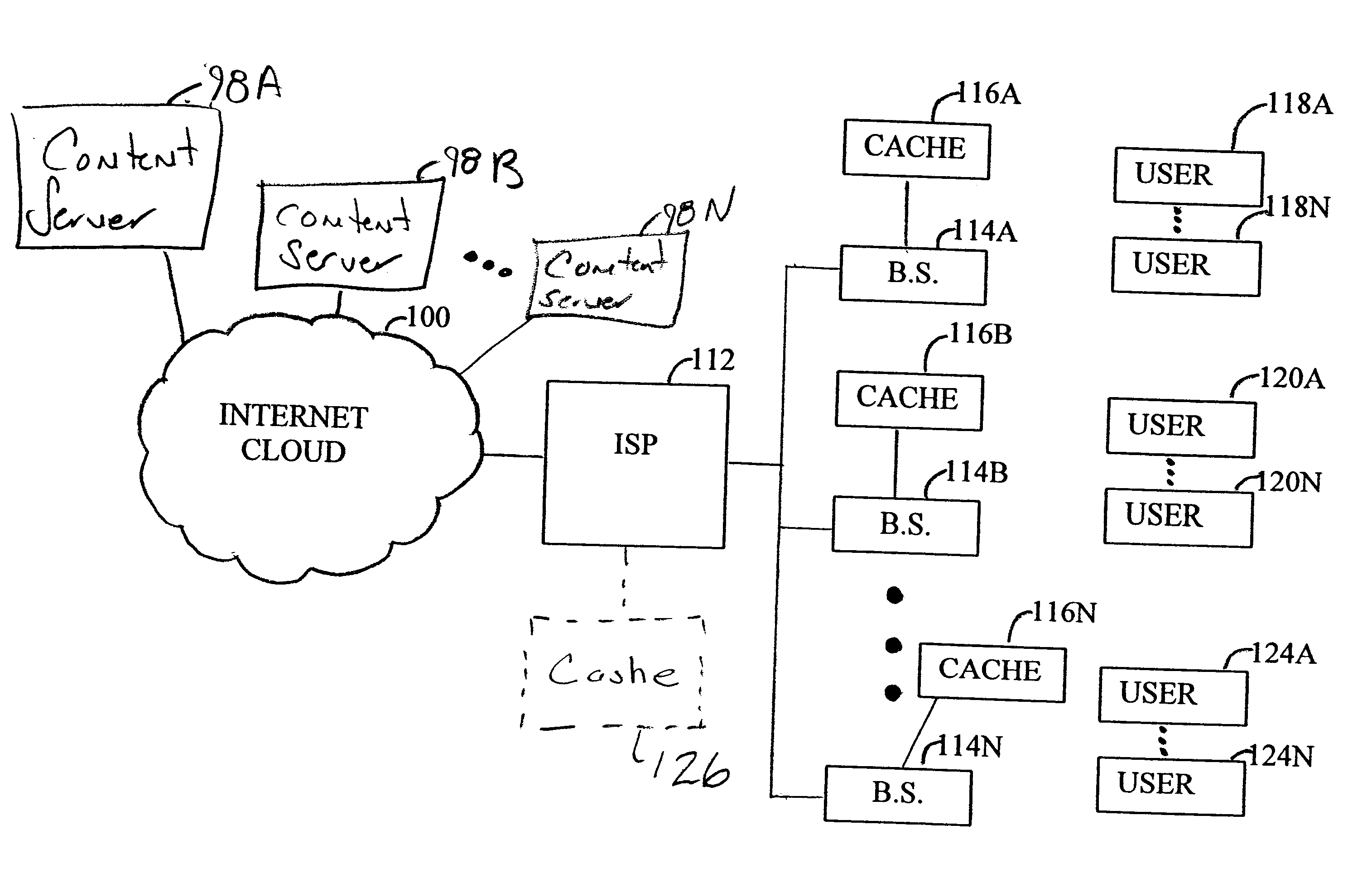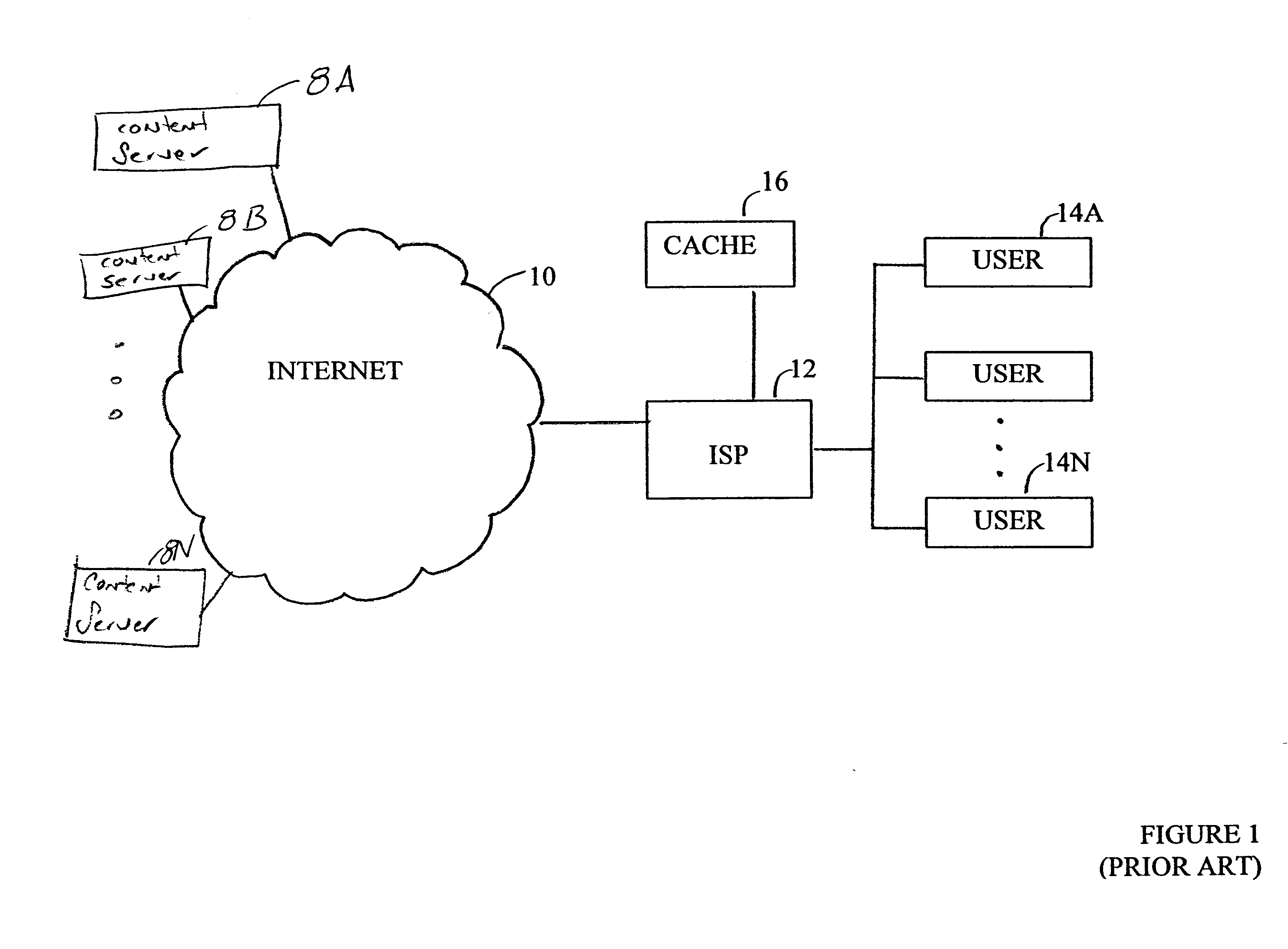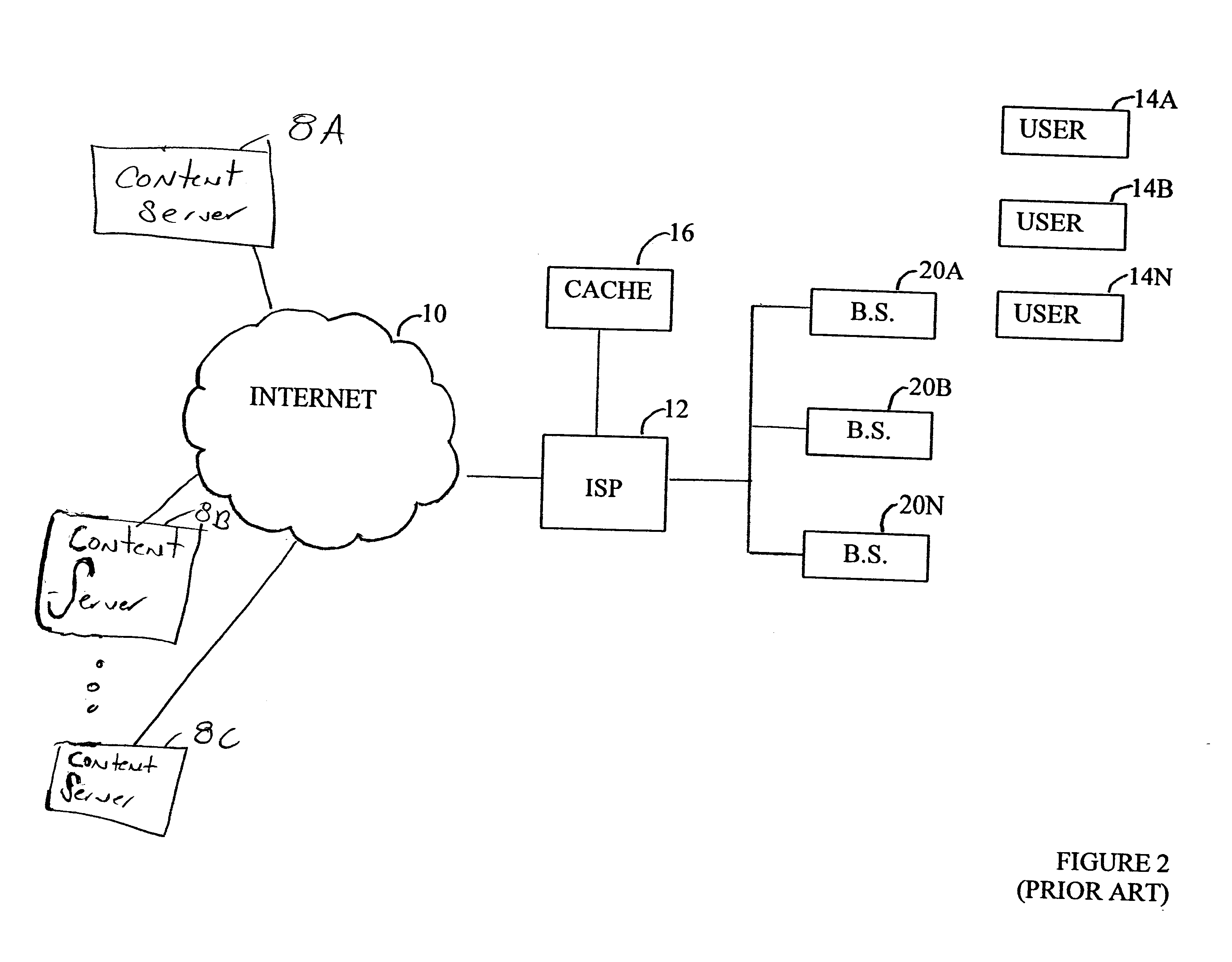Distributed cache for a wireless communication system
a wireless communication system and cache technology, applied in the field of wireless communication systems, can solve the problems of user wait experience, significant latency accumulation, and difficulty in achieving a caching rate of more than 60% based on modern internet usage patterns, and achieve the effect of improving the response time of the wireless system
- Summary
- Abstract
- Description
- Claims
- Application Information
AI Technical Summary
Benefits of technology
Problems solved by technology
Method used
Image
Examples
Embodiment Construction
[0022]FIG. 3 is a block diagram of one embodiment of the invention. In FIG. 3, a central controller, such as an Internet service provider 112, is coupled to a digital data network, such as an Internet cloud 100 to provide connection to a group of content servers 98A-98N. In addition, the Internet service provider 112 is coupled to a series of base stations 114A-114N. Generally, the Internet service provider 112 is coupled to the series of base stations 114A-114N via a base station controller as well as a series of high capacity digital data links.
[0023]Each base station 114A-114N provides service to a corresponding physical coverage area through the use of distributed antenna sites. In one embodiment, the base stations are terrestrial base stations such as those found in a typical mobile wireless or stationary wireless telecommunications system. In another embodiment, the base stations may be co-located with one another and may provide service to distinct physical coverage areas by ...
PUM
 Login to View More
Login to View More Abstract
Description
Claims
Application Information
 Login to View More
Login to View More - R&D
- Intellectual Property
- Life Sciences
- Materials
- Tech Scout
- Unparalleled Data Quality
- Higher Quality Content
- 60% Fewer Hallucinations
Browse by: Latest US Patents, China's latest patents, Technical Efficacy Thesaurus, Application Domain, Technology Topic, Popular Technical Reports.
© 2025 PatSnap. All rights reserved.Legal|Privacy policy|Modern Slavery Act Transparency Statement|Sitemap|About US| Contact US: help@patsnap.com



